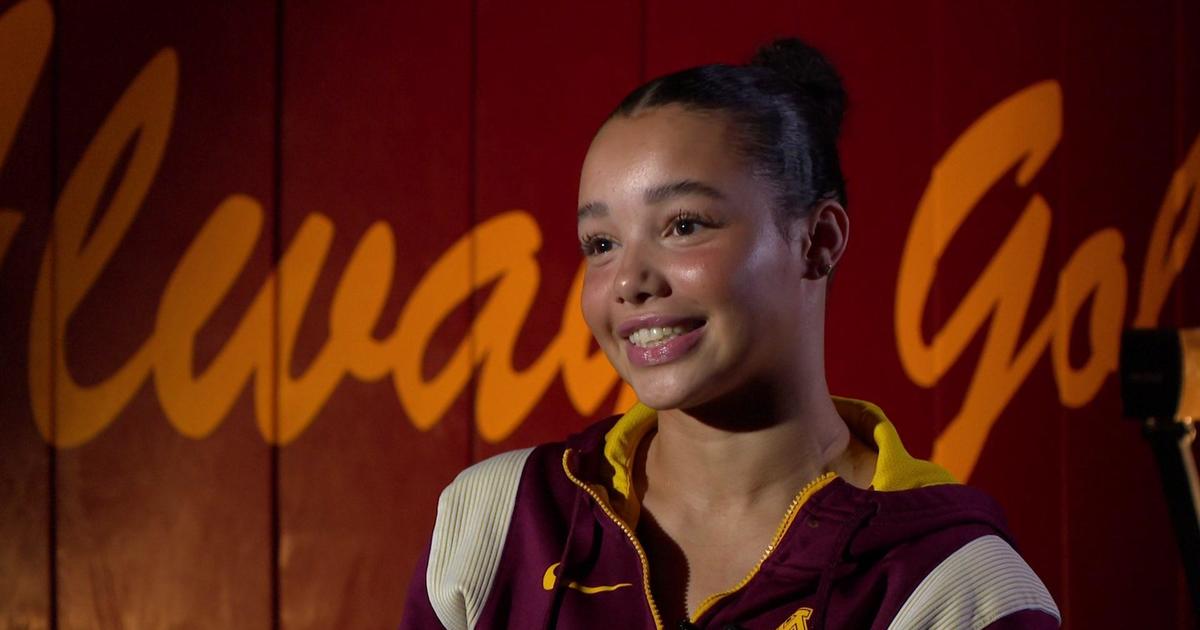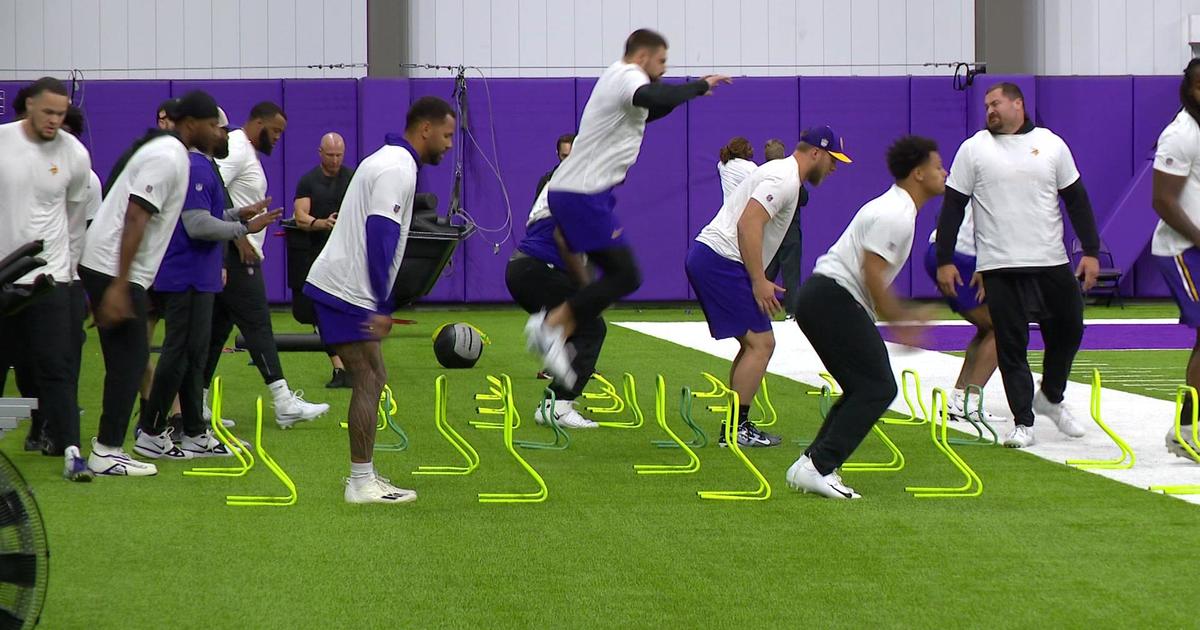NCAA's Little-Known Student Assistance Fund
MINNEAPOLIS (WCCO) -- While his teammates were getting ready to enjoy the bye week this past October, Gophers defensive lineman Harold Legania was hurting.
He and his aunt Glenda were close.
"She was always there for me," Legania said. "The one to make someone laugh. Always cooking."
So when she died, getting home to New Orleans for her funeral was very important.
But there was an issue.
"I had no idea like how (I was going to) get to New Orleans, Louisiana within two, three days," Legania said. "I don't have the funds. So I didn't think I was going to be able to go."
But the NCAA did have the funds. Or more specifically, a fund. And he was able to go.
"It meant a lot," he said. "It meant a whole lot."
Situations like Legania's come up tens of thousands of times in college athletic departments every year.
The NCAA's answer is a little-known program called the Student Assistance Fund, that has quietly spent hundreds of millions of dollars -- somehow in relative obscurity -- over the past two decades.
All for things scholarships don't cover: Trips home, summer school, graduate test fees, health insurance, utility bills, child care costs, medical expenses, dental work and clothing.
That's what Nicole Ohlde used it for, to buy the dress she wore the night the Lynx picked her sixth overall in the WNBA draft.
"As a college student, obviously you don't have a lot of money," Ohlde said. "Who doesn't want to look nice for a draft, or a special moment like that? And so I definitely was appreciative, and I'm glad I was able to use it."
College Football and men's basketball players bring in billions of dollars of revenue for their schools. And yet, you hear stories all the time of ones who can't afford to buy a coat or a plane ticket home.
As it begins its annual convention later this week in San Diego, the NCAA is facing a class-action lawsuit that could change college sports forever.
It's the biggest issue right now facing college sports: Should the NCAA start paying players?
Underneath the debate sits the Student Assistance Fund, which tens of thousands of college athletes use every year and most people have never heard of. Including the athletes.
Last year, 375 Gopher athletes used the Student Assistance Fund, spending $402,000.
"Sometimes it's about academic need," says Gophers associate athletic director Beth Goetz, who administers the Fund at the U of M. "Sometimes it's about, hey, it's just the right thing to do and we want to do it for as many student-athletes as we can."
The process is relatively simple -- a one-page form for the compliance department.
"They took care of everything for me," Legania said.
Minnesota's athletic department also uses the Fund for department-wide programs, like student-athlete leadership group meetings and an awards dinner.
In 2012, it used more than $20,000 to send members of the football team to Gary Tinsley's funeral in Jacksonville.
"Funerals is (a) really common (use)," Goetz said.
The money comes from the NCAA's multi-billion dollar media rights deals, and can only be used to directly benefit athletes -- not salaries or facilities or things a scholarship is already supposed to cover.
The NCAA started its first version of the fund in 1991, after signing a $1 billion deal with CBS to broadcast March Madness, with $1 million in the fund the first year.
And it's grown every year since -- exponentially -- nearly doubling in just the last seven years, with $75.5 million budgeted for this year, according to the NCAA.
Its use at the University of Minnesota has similarly surged. From $263,000 for 225 student-athletes in 2010-11 to $402,000 for 375 student-athletes in 2012-13, the most recent numbers available, which WCCO obtained from the school upon request.
So the idea that scholarship athletes who can't afford to buy a coat or a plane ticket home? The NCAA boldly calls it an "urban myth."
"If a student-athlete feels like they're in a tough position, I think there needs to be some more conversations with them to find out why they are in that situation," NCAA spokeswoman Stacey Osburn said. "Particularly when you look at the benefits that are provided."
But the Student Assistance Fund has also faced its share of criticism. A Chronicle of Higher Education story last year highlighted the purchase of lightning detection software at Northwestern, ambiguous "team-building" activities at Ohio State, Illinois, Michigan and Wisconsin, and hundreds of thousands of dollars in reading and learning tests, chair rentals, parking permits, massages and yoga -- money that might technically be benefiting students, but maybe not in the way the fund intended.
Maryland used it to buy all of its athletes iPads.
"It's a good program," says Vikings punter Jeff Locke, who has an economics degree from UCLA and has been a vocal advocate for college athletes. "But at the same time, you're kind of like, why can't the school just pay for these things anyways? You know? Why does there need to be a certain fund set aside to pretty much circumvent the rules that might not need to be there in place in the first place?"
Locke spent 3 1/2 years in college working with the National College Players Association, lobbying the NCAA to reform its policies -- namely, advocating for bigger scholarships.
"I think the NCAA uses the Special Assistance Fund as kind of their scapegoat," he said. "'Look, we do give this money, we give them all this money!' But they don't want to address the real issue."
Which Locke says -- in a 33-page report he helped write for the NCPA -- is that the average full-ride scholarship isn't a full ride at all, but falls more than $3,000 a year short, and that at least 85 percent of full scholarship athletes actually live below the federal poverty line.
Devil's Advocate, the NCAA would say that's why the program exists.
"But it's not," Locke said. "I mean, they're struggling to pay rent, and to pay for food."
Which the fund, along with many other personal expenses, isn't allowed to cover.
"What they call a full scholarship is great," Locke said. "But it doesn't meet what you actually need in college."
Osburn says that is an active discussion at the NCAA right now.
"What else can be provided for student-athletes?" she said.
Universities, Minnesota included, feel like they're stuck in a balancing act. On one hand, you've got a segment of the public who believes athletes are coddled and given all kinds of special treatment and privileges - including a scholarship package valued between $50,000 and $125,000 a year.
Not to mention the Student Assistance.
And you've got another segment who believes -- and cites evidence -- that that's not enough.
So how do you provide for the full need, without making other students feel like athletes are handed a golden goose?
"There seems to be general agreement that more needs to be done," Osburn said. "It's just identifying the best way to do that."
In the meantime, the NCAA says it expects the Student Assistance Fund to continue to continue to grow at its rapid pace. Which is good news for players like Legania, and the tens of thousands of college athletes every year who need it.
According to the most recent numbers available from the NCAA, 87,000 college athletes used the Student Assistance Fund in the 2011-12 school year.
One of the ideas to be discussed and debated at this week's NCAA convention is a $2,000 per student, per year stipend for out-of-pocket expenses.
The NCAA board of directors initially approved that program in 2011, but it was overridden by enough schools to cancel it.
Interesting links:
The Price of Poverty in Big Time College Sport (NCPA)
Meeting The Needs of Student-Athletes (NCAA)
The NCAA Nears Judgment Day (Wall Street Journal)
NCAA Money in Many Pockets (The Chronicle of Higher Education)
Defining the Future (NCAA)
Student Assistance Fund Guidelines (NCAA)



